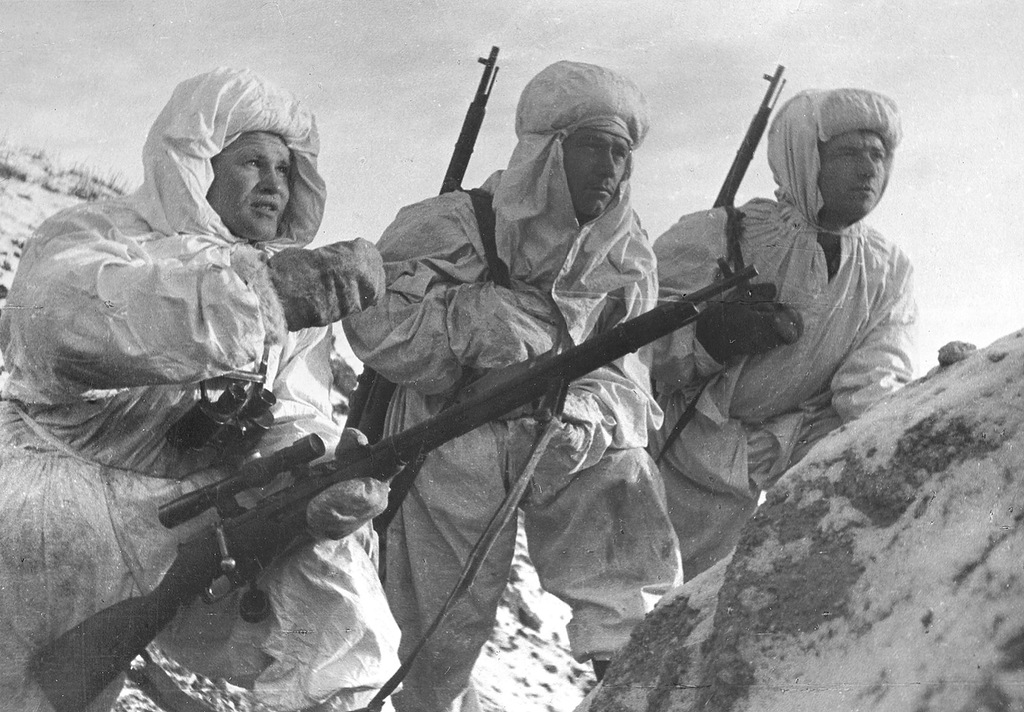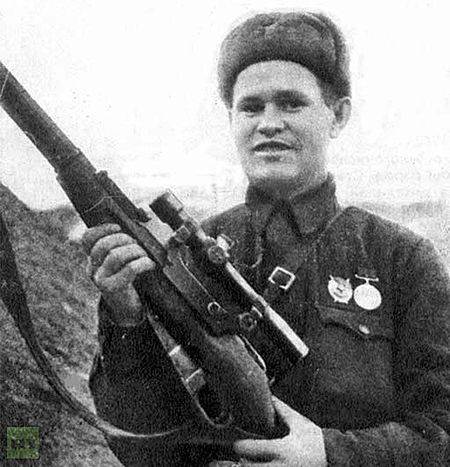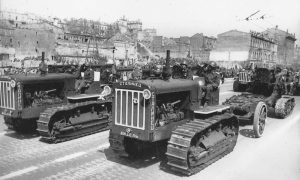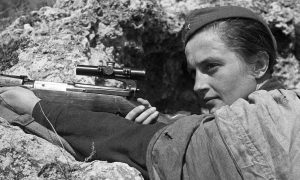Vasily Grigorievich Zaitsev – sniper of the 62nd Army of the Stalingrad Front, Hero of the Soviet Union. During the Battle of Stalingrad from November 10 to December 17, 1942, he eliminated 225 soldiers and officers of the German army and their allies, including 11 snipers.
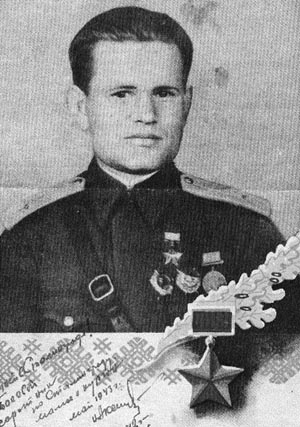
Vasily Grigorievich Zaitsev was born on March 23, 1915 in the village of Yeleninka, Polotsk stanitsa, Verkhneuralsky district of the Orenburg province (now the Kartalinsky district of the Chelyabinsk region ) into a peasant family. Vasily’s grandfather, Andrei Alekseevich Zaitsev, taught his grandchildren, Vasily and his older cousin, Maxim, to hunt from early childhood. At the age of 12, Vasily received his first hunting rifle as a gift.
He graduated from seven classes of junior high school. In 1930 he graduated from the construction technical school in the city of Magnitogorsk, where he received the specialty of a fitter. Then he graduated from accounting courses.
From 1937 he served in the Pacific Fleet , where he was enlisted as a clerk of the artillery department. After studying at the Military Economic School, he was appointed head of the financial department in the Pacific Fleet, in the Preobrazhenie Bay. In this position, he was found at the beginning of the Great Patriotic War( WWII).
By the summer of 1942, the foreman of the 1st article, Zaitsev, had submitted five reports with a request to send him to the front. Finally, the commander granted his request, and Zaitsev left for the active army, where he was enlisted in the 284th Infantry Division. On a September night in 1942, Zaitsev, after a short preparation for battles in urban conditions, crossed the Volga and took part in the battles for Stalingrad. The operation was planned so brilliantly that the Germans did not notice the transfer of an entire division.
His words went down in history: “For us, soldiers and commanders of the 62nd Army, there is no land beyond the Volga. We stand, and we will fight to the death!”.
Already in the first battles with the enemy, Zaitsev showed himself to be an outstanding shooter. Once Zaitsev, from a distance of 800 meters from a window, firing from an ordinary ‘3rd line rifle’, eliminated three enemy soldiers. As a reward, Zaitsev received a cash prize, a sniper rifle with a telescopic sight and a medal “For Courage”. By that time, from a simple ” three-line ” Zaitsev had killed 32 enemy soldiers. Soon they started talking about him in the regiment, division and the entire army.
Zaitsev combined all the qualities inherent in a sniper – visual acuity, sensitive hearing, endurance, composure, endurance, military cunning . He knew how to choose the best positions, to mask them; usually hid from enemy soldiers where they could not even imagine a Soviet sniper. Zaitsev’s tactics and inventions rewrote textbooks on sniper science not only Soviet, but all over the world. Some of his tactics and methods are studied in Modern Sniper schools all over the world
Zaitsev pursued his task with ferocity. In the period from November 10 to December 17, 1942, in the battles for Stalingrad, V. G. Zaitsev destroyed 225 enemy soldiers and officers, including 11 snipers. A duel with the German “super sniper”, whom Zaitsev himself calls Major Koenig in his memoirs (according to Alan Clark – the head of the sniper school in Zossen, SS Standartenfuehrer Heinz Torvald), sent to Stalingrad with a special mission to fight Soviet snipers, and the primary task was to destroy Zaitsev. Zaitsev, in turn, was ordered to destroy Koenig personally from the commander N.F. Batyuk . After one of the Soviet snipers had an optical sight broken by a bullet, and another in the same area was wounded, Zaitsev managed to establish the enemy’s position. About the fight that followed, Vasily Grigorievich wrote:
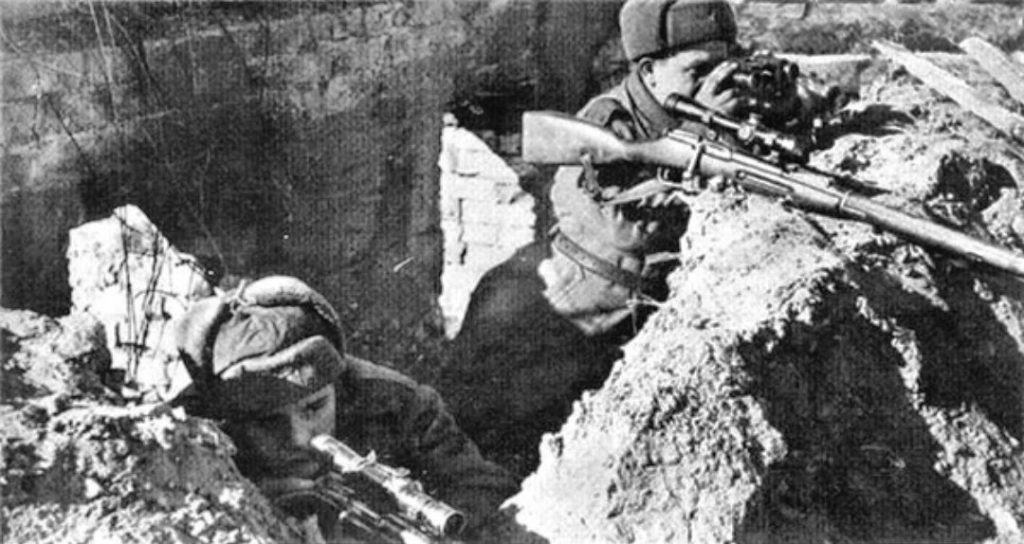
“ It was clear that an experienced sniper was acting in front of us, so we decided to intrigue him, but the first half of the day we had to wait out, because the brilliance of the optics could give us away. After lunch, our rifles were already in the shade, and the direct rays of the sun fell on the fascist’s position. Something glittered from under the sheet – a sniper scope. Well-aimed shot, the sniper fell. As soon as it got dark, ours went on the offensive and in the midst of the battle we pulled out the killed fascist major from under the iron sheet. They took his documents and delivered them to the division commander. ”
Unlike all standard, both German and Soviet rifles of that time, in which the sight magnification was only 3-4 times, since only virtuosos could work with a large magnification, the sight on the rifle of the head of the Berlin school had an increase of magnification of 10 times. This is what speaks about the level of the enemy that Vasily Zaitsev had to face.
In January 1943, following the order of the division commander to disrupt the German attack on the right-flank regiment by the forces of Zaitsev’s sniper group, which at that time had only 13 people, Zaitsev was seriously wounded and blinded by a mine explosion. He was taken by plane to Moscow, and only on February 10, 1943, after several operations performed there by Professor Filatov, his sight returned.
Throughout the war, V.G. Zaitsev served in the army, headed the school of snipers, commanded a mortar platoon, then was a company commander. On account of his 242 killed enemy soldiers and officers. He participated in the liberation of Donbass, in the battle for the Dnieper, fought near Odessa and on the Dniester. May 1945 Captain V.G. Zaitsev met in Kiev – again in the hospital.
During the war years, Zaitsev wrote two textbooks for snipers, and also developed the “six” sniper hunting technique used until now – when the same battle zone is blocked by fire by three pairs of snipers (shooters and observers).
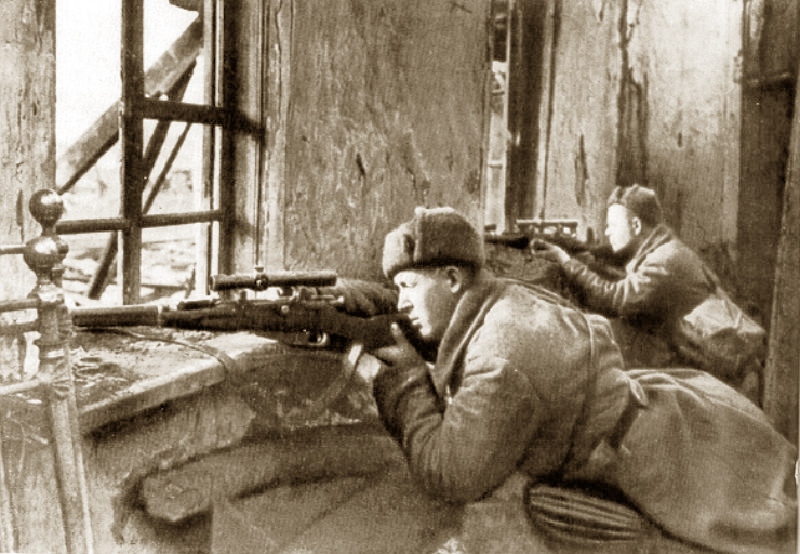
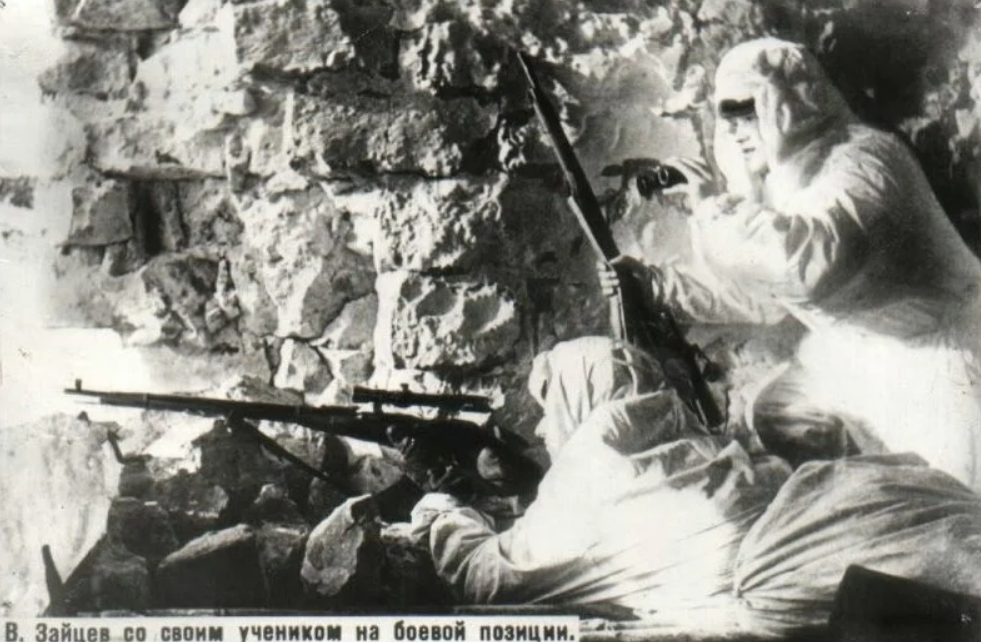
Post-War Years
After the end of the war, he was demobilized and settled in Kiev. He was the commandant of the Pechersk region. He studied in absentia at the All-Union Institute of Textile and Light Industry . He worked as a director of a machine-building plant, director of a garment factory “Ukraine”, headed a technical school of light industry. Participated in army tests of the SVD rifle .
Died on December 15, 1991. He was buried in Kiev at the Lukyanovskoye military cemetery, although his will was to be buried in the Stalingrad land, which he defended.
On January 31, 2006, the ashes of Vasily Grigorievich Zaitsev were solemnly reburied with all military honors in Volgograd on the Mamayev Kurgan.


